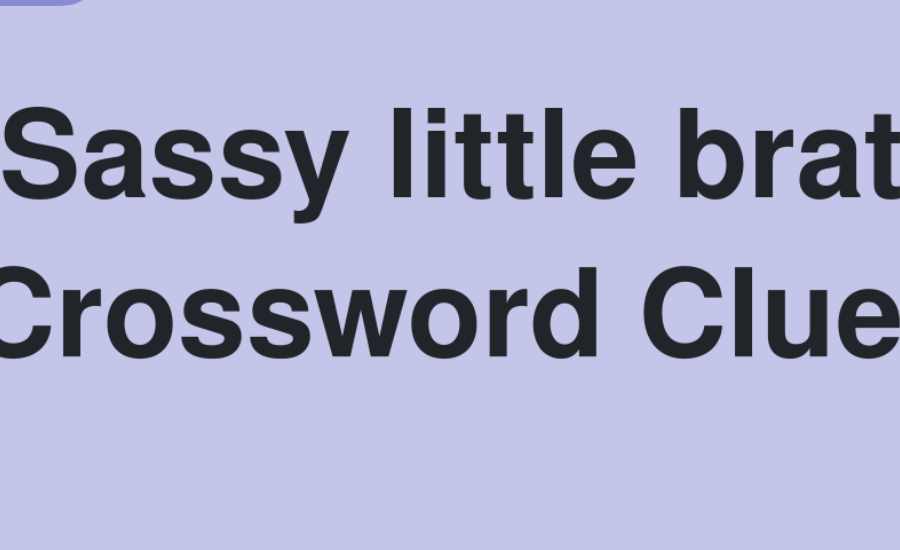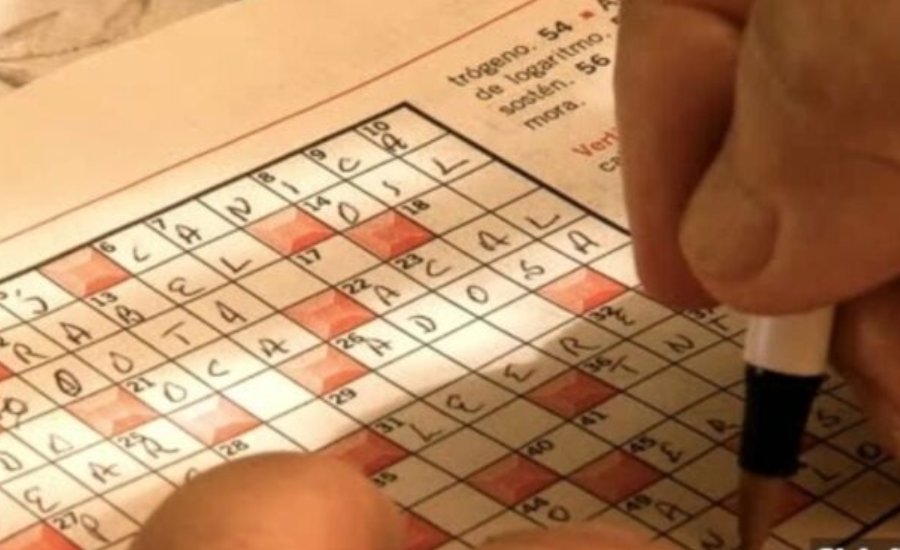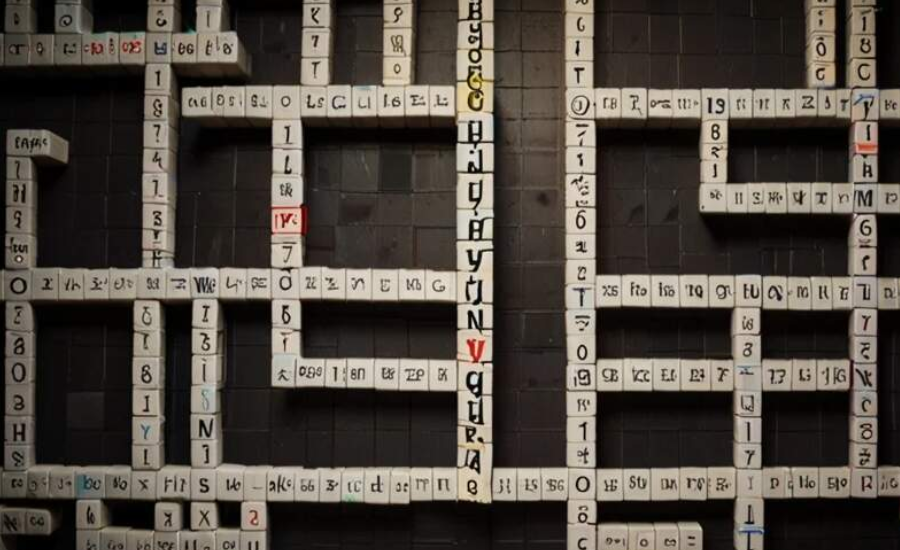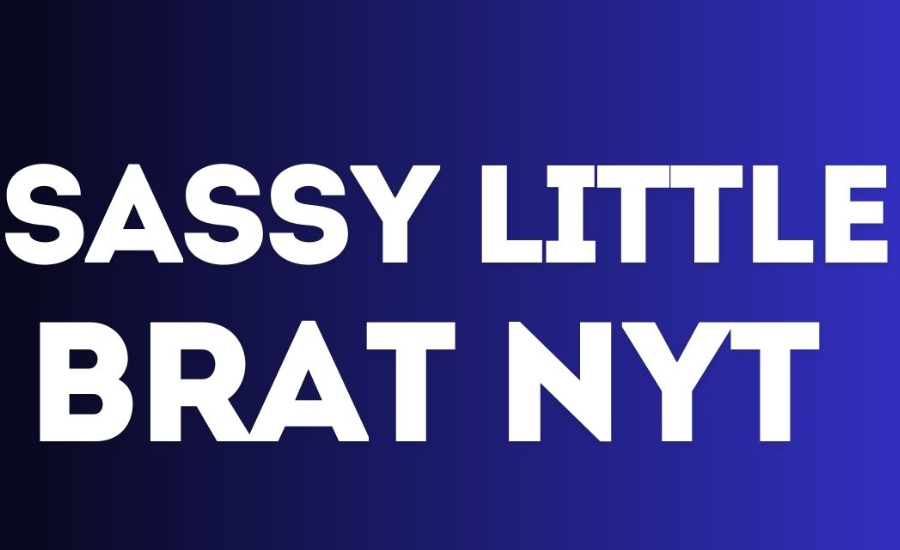Introduction To The New York Times Crossword Culture

Sassy Little Brat NYT Crossword puzzles have long been a cherished pastime, combining elements of challenge, entertainment, and learning. Among the myriad of crossword sources available, The New York Times (NYT) stands out as one of the most prestigious and beloved. The NYT crossword puzzles are famed for their witty clues, intricate wordplay, and clever cultural references, making them a favorite among both amateur and seasoned solvers alike.
One particular clue that has recently garnered attention is the phrase “sassy little brat.” This clue exemplifies the playful yet tricky nature that NYT crosswords are renowned for. The answer to this engaging clue is the word “SNOT,” which perfectly captures the essence of a cheeky and mischievous child. In this guide, we will break down the clue, explore the appeal of NYT puzzles, and provide tips for tackling similar tricky crossword challenges.
The Irresistible Appeal Of NYT Crosswords
The allure of NYT crosswords lies in their ability to challenge solvers with clever and thought-provoking clues. These puzzles are meticulously crafted to engage your mind, requiring not just a strong vocabulary but also a knack for lateral thinking. The clues often employ wordplay, double meanings, puns, and cultural references that can stump even the most experienced crossword enthusiasts.
Take, for example, the clue “sassy little brat.” At first glance, it seems straightforward, yet it requires thinking beyond the obvious. The solution, “SNOT,” is a slang term that perfectly embodies the behavior described—a person who is annoyingly cheeky or bold. This type of clever clue is what makes solving NYT crosswords both challenging and immensely satisfying.
Understanding The Clue: What Does “Sassy Little Brat” Mean?

Deciphering the phrase “sassy little brat” requires a bit of creativity and familiarity with colloquial language. The term “sassy” hints at someone who is cheeky, outspoken, or slightly rude, while “little brat” typically refers to a mischievous or troublesome child. When these descriptors are combined, they point towards the slang term “SNOT,” which is often used to describe someone who is annoying or overly self-assured.
This clue is a classic example of how crossword creators use playful language to engage solvers. It challenges you to look past the literal definitions and think about colloquial or slang meanings that align with the clue’s tone. The answer “SNOT” fits the clue well because it captures that blend of impudence and annoyance suggested by the phrase.
The Art Of Wordplay In Crosswords
Wordplay is the cornerstone of great crossword puzzles, especially those featured in the New York Times. It involves twisting the meanings of words, using puns, or applying synonyms in unexpected ways. The clue “sassy little brat” is a perfect illustration of this technique, where the words lead you towards a less obvious answer.
Crossword puzzles often leverage a mix of cultural references, slang, and idiomatic expressions to stump solvers. This not only tests your vocabulary but also your ability to draw connections between different meanings and contexts. Solving clues like this one requires a combination of linguistic creativity and cultural awareness, making NYT crosswords a mentally stimulating hobby.
Tips For Tackling Tricky Crossword Clues
If you’re trying to solve crossword puzzles and come across challenging clues like “sassy little brat,” consider these strategies:
- Break Down the Clue: Analyze each word separately. For example, break “sassy” into synonyms like “cheeky” or “bold,” and “brat” into “imp” or “pest.”
- Think of Slang or Colloquial Terms: Crossword answers often involve informal language. “SNOT” is a great example of a slang term used to describe an annoying individual.
- Use Word Associations: Think about what the clue makes you feel or imagine. Sometimes, focusing on the tone or implication of the words can lead you to the right answer.
- Consider Synonyms: Start by listing out synonyms for each word in the clue. This can help you uncover less obvious answers.
- Look for Contextual Clues: NYT crosswords often embed subtle hints within the clue’s wording. Pay attention to nuances in language or cultural references that might guide you toward the solution.
Examples Of Similar Crossword Clues

Here are a few examples of crossword clues similar to “sassy little brat” and their solutions:
- Clue: “Cranky kid” | Answer: “IMP”
- Clue: “Mischievous child” | Answer: “IMP”
These clues share the theme of describing a troublesome or cheeky character, requiring you to think creatively to arrive at the solution.
Conclusion: The Joy Of Solving Clever Crossword Clues
Engaging with crossword puzzles, particularly those from the New York Times, is not only a delightful pastime but also an exercise in critical thinking. Clues like “sassy little brat” highlight the ingenious wordplay that makes these puzzles both challenging and rewarding. By expanding your vocabulary, sharpening your wit, and embracing cultural references, you can enhance your crossword-solving skills and enjoy the journey of deciphering these mind-bending clues.
Whether you’re a casual solver or a crossword aficionado, there’s always something new to learn and enjoy from each puzzle. So the next time you encounter a tricky clue, remember to think outside the box and appreciate the clever wordplay that makes crosswords a timeless form of entertainment.
FAQs Sassy Little Brat NYT
What Is the Answer to the NYT Crossword Clue “Sassy Little Brat”?
The answer to this playful crossword clue is “SNOT.”
Why Is “SNOT” the Correct Answer?
The term “SNOT” is slang for someone who is irritatingly cheeky or arrogant, which aligns perfectly with the description of a “sassy little brat.”
What Makes NYT Crossword Puzzles So Challenging?
NYT crosswords are challenging due to their use of clever wordplay, cultural references, and often ambiguous clues that require both creativity and lateral thinking.
How Can I Improve My Crossword-solving Skills?
To become a better solver, practice regularly, familiarize yourself with common crossword tricks, and try to think beyond the literal meanings of clues. Engage with a variety of puzzles to broaden your vocabulary and problem-solving techniques.
Why Are Cultural References Important in Crosswords?
Cultural references add depth to crossword clues, making them more engaging and diverse. They require solvers to draw on a wide range of knowledge, adding layers of challenge and satisfaction.
Thank you for reading our guide! Explore more of our blog for tips and insights into the fascinating world of crossword puzzles.
Read More: adn-237.org
